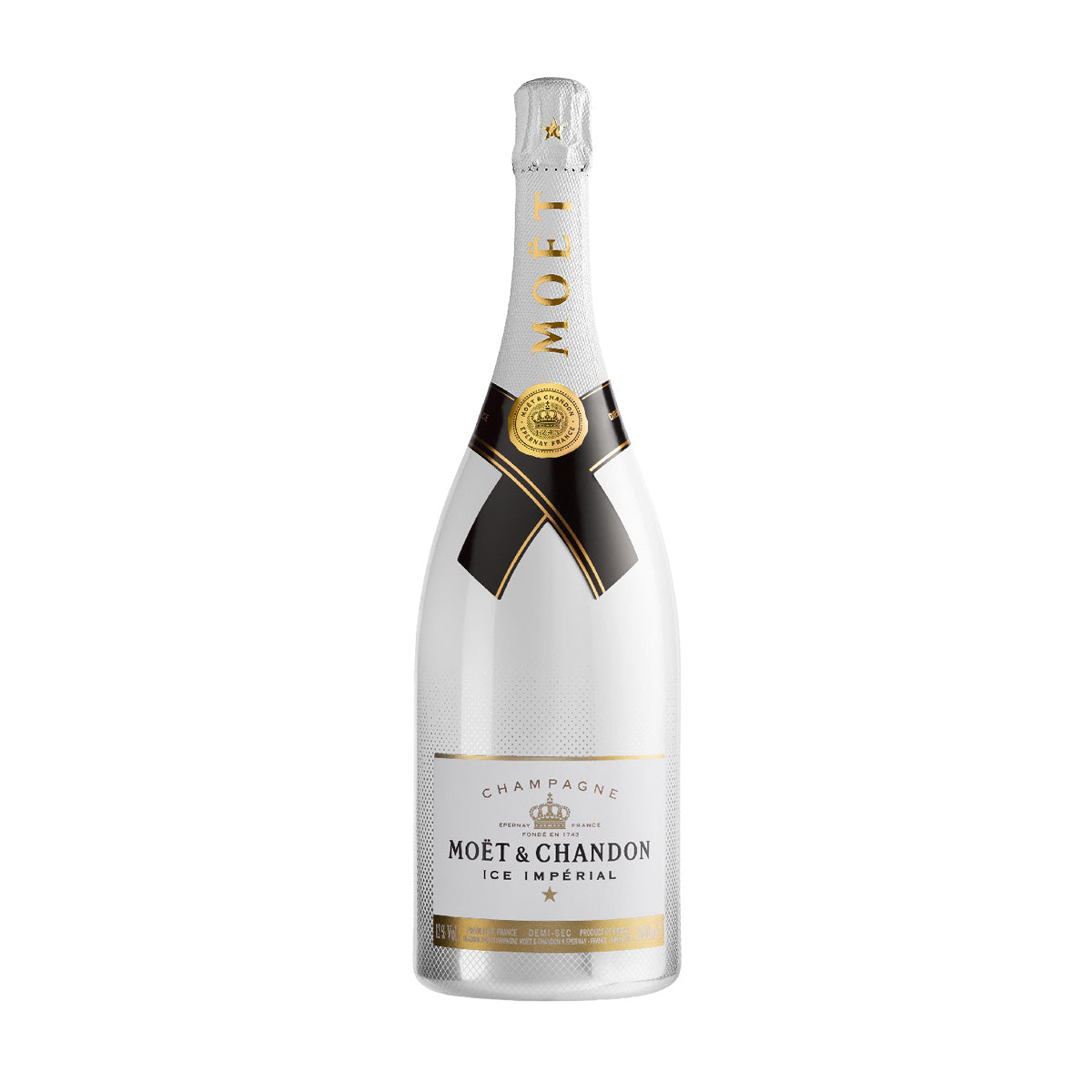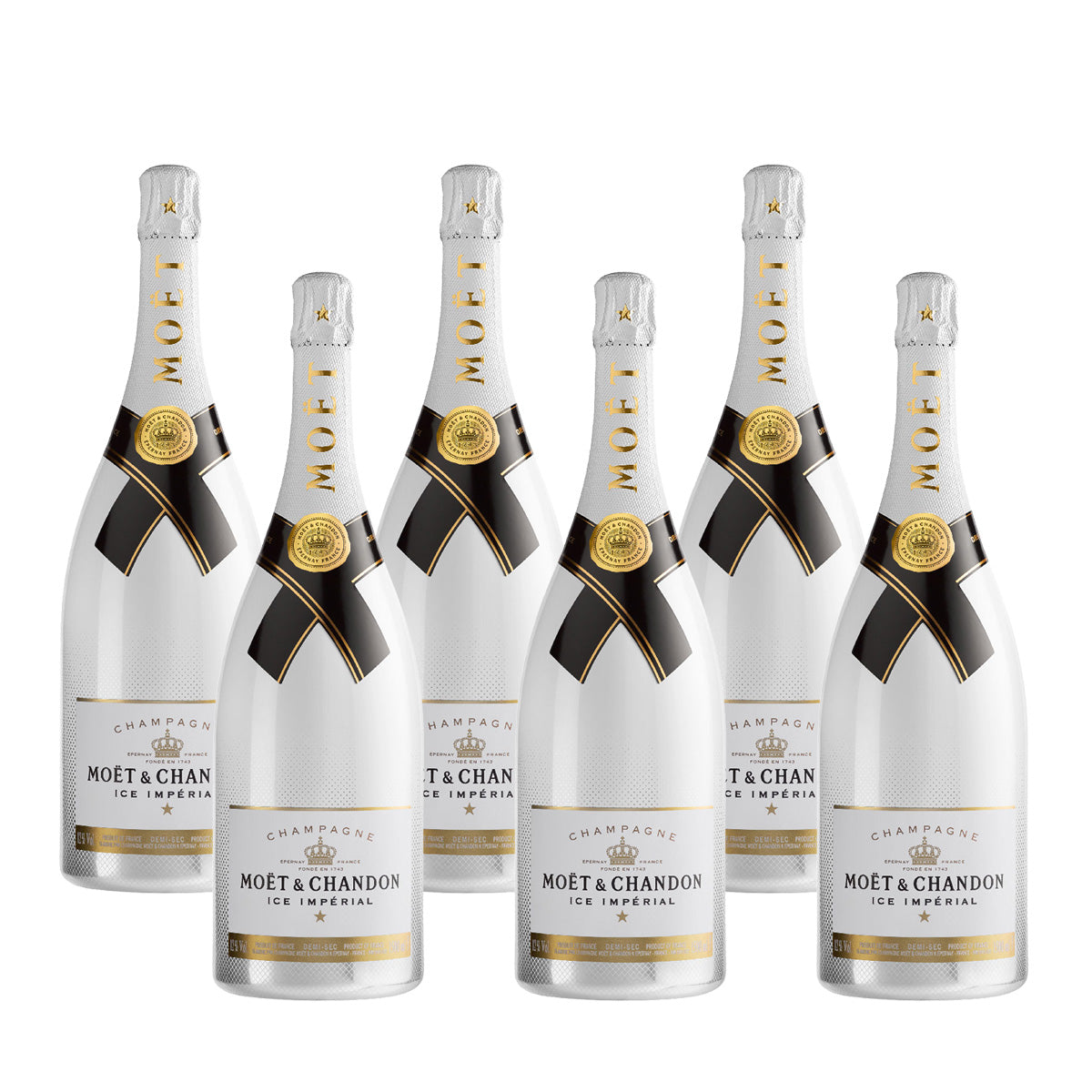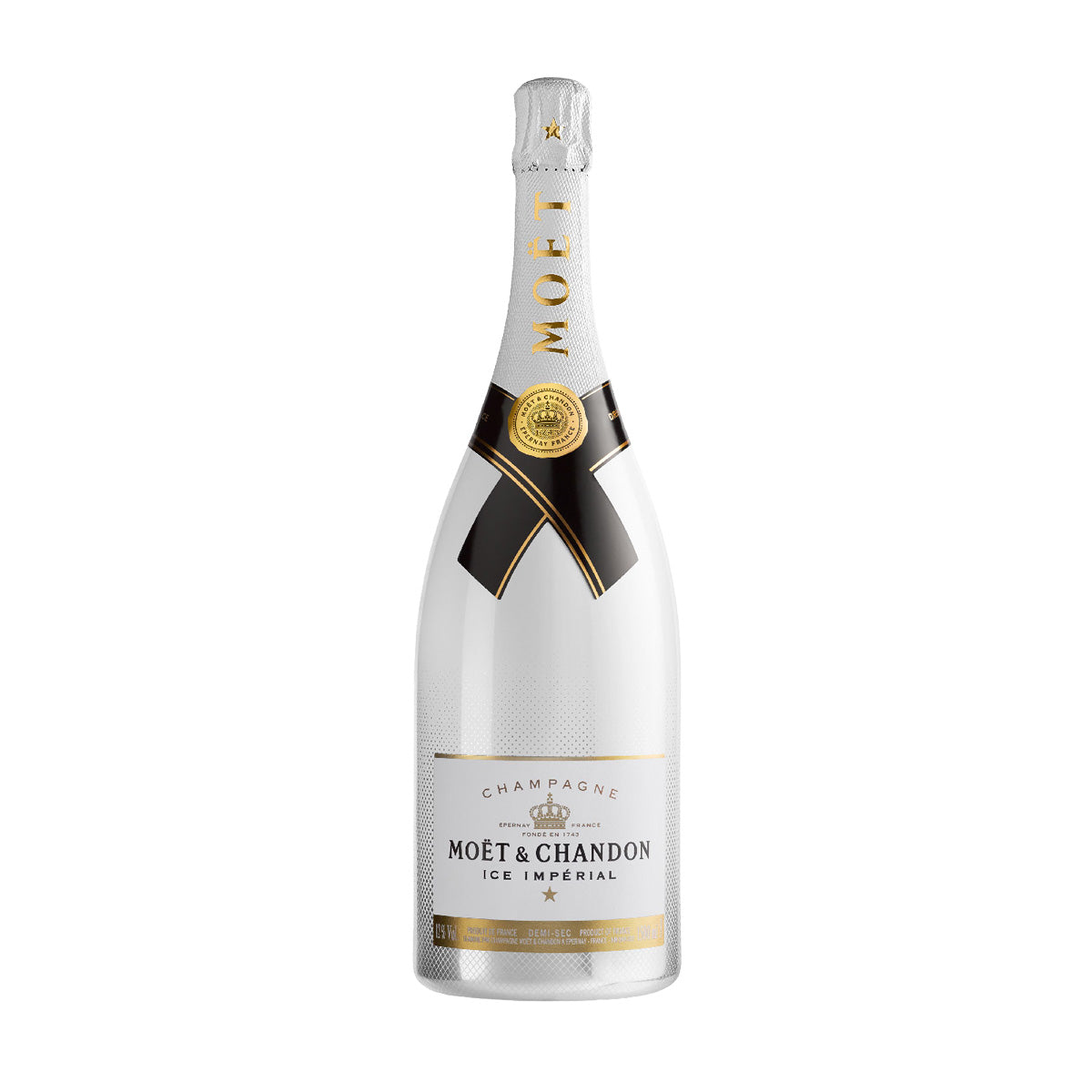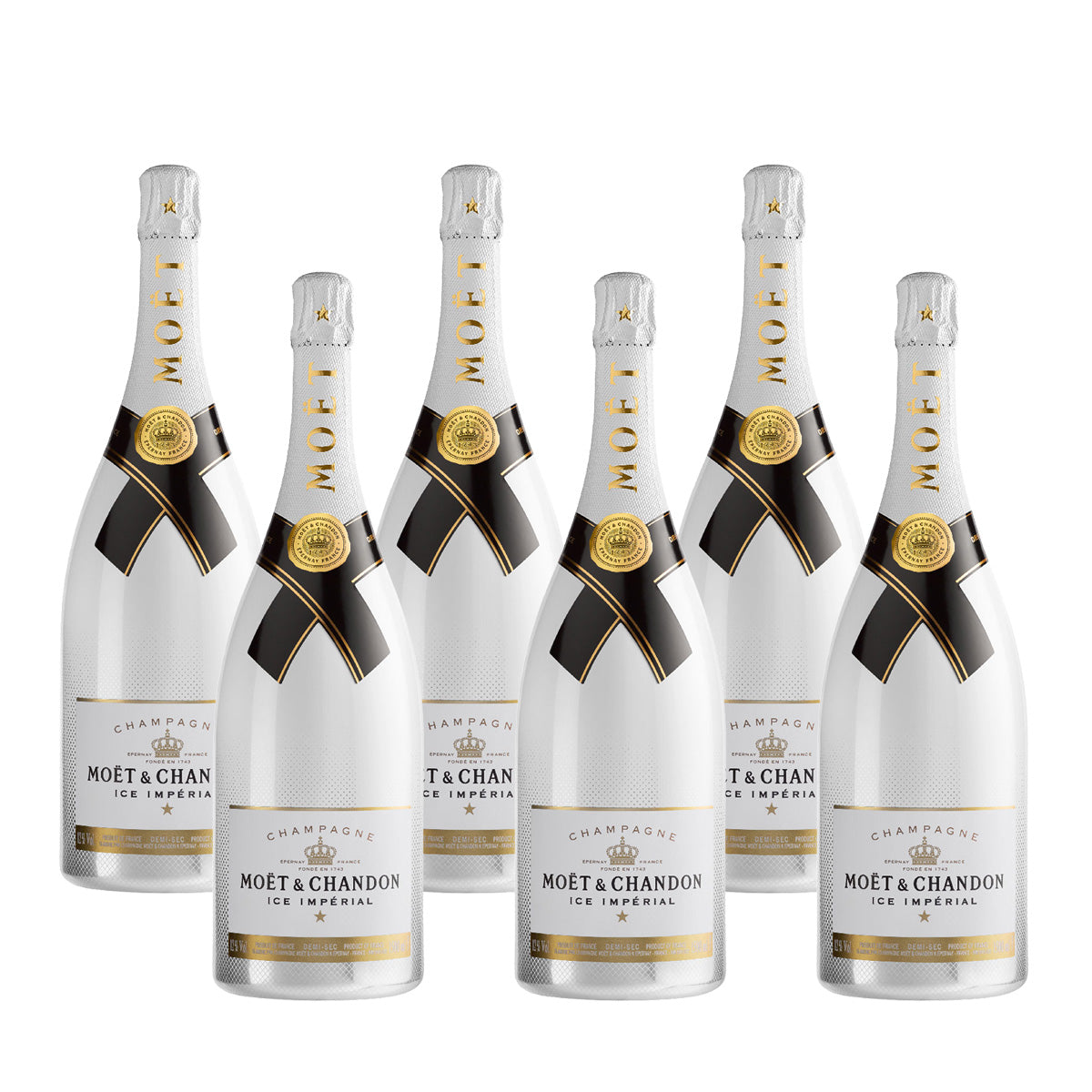Moët & Chandon
Moët & Chandon Ice Impérial
Moët & Chandon Ice Impérial
Couldn't load pickup availability
Product Detail
Product Detail
Founded in 1743, Moët & Chandon is the Maison that introduced champagne to the world by offering a range of unique wines for every occasion. The first fresh, fun, free and only refreshing champagne specially created to be enjoyed on ice. It offers a new experience combining free, fresh and fun sensations while remaining true to Moët & Chandon style.
HOW TO ENJOY
HOW TO ENJOY


Appearance: The champagne's golden hue is tinged with subtle hints of amber.
Aroma: Tropical fruit aromas combine with those of nectarine, raspberry and gooseberry.
Taste: An ample palate reveals flavours of fresh fruit salad, with the sweetness of caramel. Refreshing acidity comes from gooseberry and ginger notes.
Cold appetizers: Creamy sauce of smoked salmon with cucumber ball, Bass tartar and lime zest, Basil granita, shrimp and alfalfa Fresh rock crab with spicy guacamole, Tuna, soja and wasabi. Sweet appetizers: Strawberry with white chocolate, Lemon tartlet, Cheese cake, Crème brûlée with caramel.
Moët Ice Impérial's flavours can be further enhanced when served in a chic cocktail. Test your mixology skills with a Life in Venice: chill 15 mL Aperol and three dashes of bitters and pour over ice in a large white wine or cabernet-style glass. Top with Ice Impérial and garnish with a grapefruit twist.
Epernay, Champagne France. The 1,190 hectares of rich limestone soil, 50% of which is classed as Grand Cru and 25% Premier Cru, make up the largest vineyard area in Champagne. Underground, the Moët & Chandon cellars are the most extensive in the region. Extending more than 28 kilometres, they form a subterranean labyrinth where the wine metamorphoses under optimum conditions of humidity and temperature.



